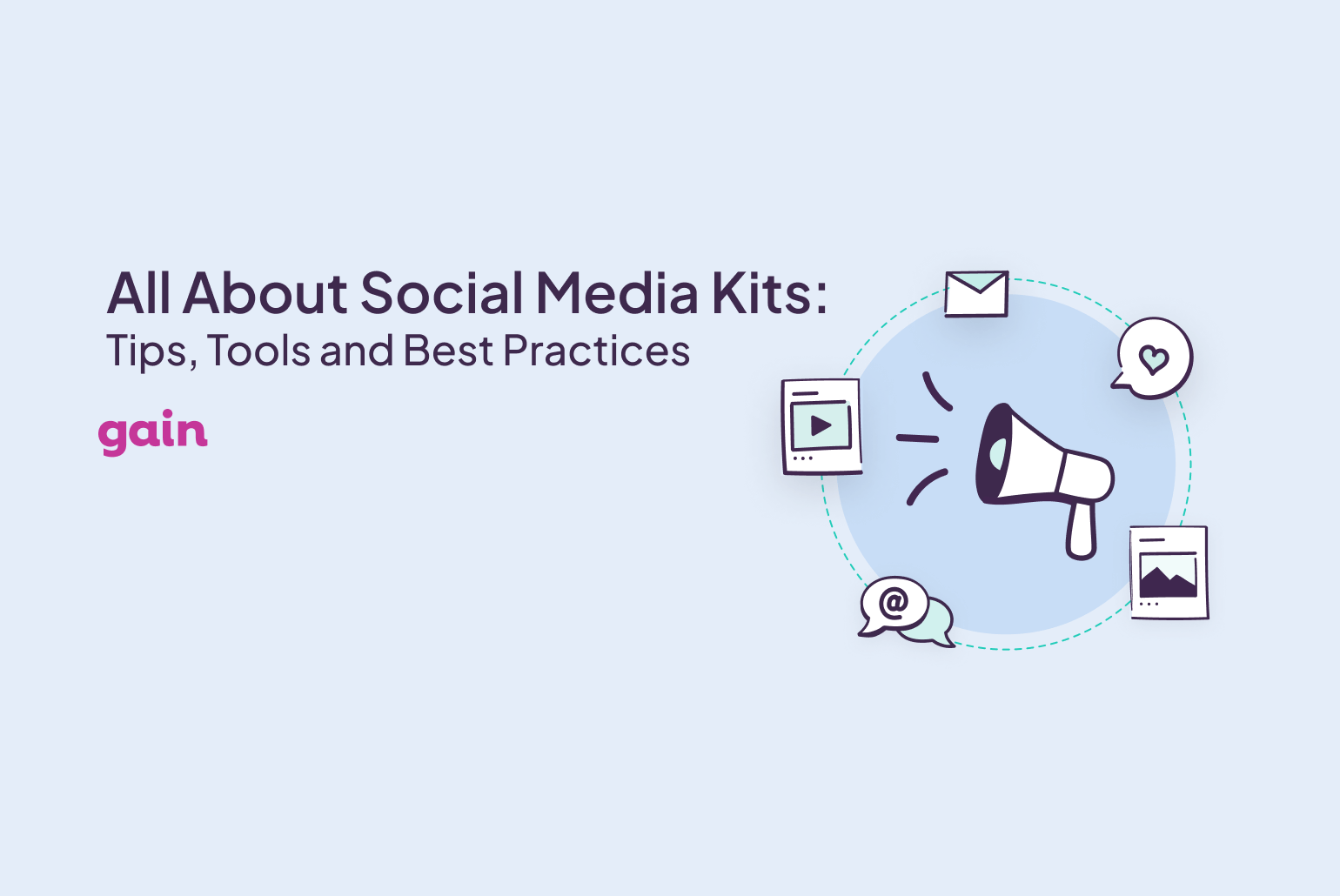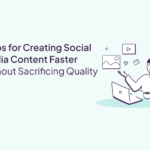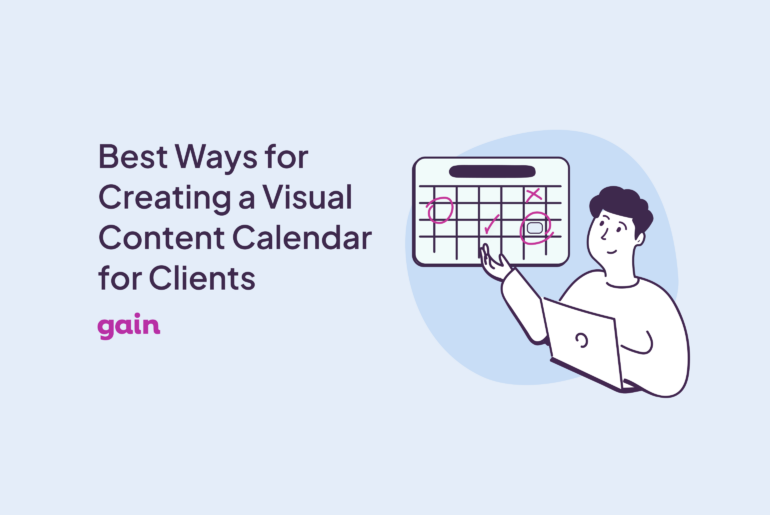A social media kit is a handy tool for any brand wanting to look consistent and professional online.
For example, if your brand hires a social media agency or freelancers to manage your social media, a kit ensures they stick to your brand’s style. Similarly, if your team handles multiple projects, a social media kit keeps everyone on the same page. Or, if you work with journalists, a media kit serves as a source of all important information about your brand.
So, whether you already have a social media kit or you’re just looking to develop one, in this practical guide, you’ll learn:
- The essential components of a social media kit.
- How to create a comprehensive and effective social media kit.
- The best tools for creating your social media kit.
What is a Social Media Kit?
A social media kit is a collection of branded assets and guidelines designed to ensure consistency and quality across all social media platforms. It serves as a go-to resource for anyone creating content for your brand, whether they are in-house team members, freelancers, or external partners.
They come in all shapes and sizes: social media kits, media kits, press kits, public relations kits, branding kits, and other similar variations. But they all basically do the same thing—provide essential information about your brand to internal and external stakeholders in a clear and visually appealing way.
Why Brands Need a Social Media Kit
There are many reasons why you should have a social media kit. Internally, if you’re a business of 10+ people and you maybe work with freelancers or an agency to create social media content, having a document that has everything about your brand, from logo to tone of voice, ensures that whoever posts on behalf of your company sounds on-brand.
In other words, a social media kit keeps your brand looking and sounding consistent across all platforms, which is crucial for building recognition and trust.
If you work with external partners, such as influencers or other businesses, a social media kit is a great way to attract and inform these stakeholders by providing a comprehensive overview of the brand, its audience demographics, and past successful campaigns.
Social Media Kit Examples
1. Slack
Slack, a popular team communication app, has an entire webpage dedicated to its media kit. It includes items like logos, product screenshots, and other branding assets and guidelines.

2. LinkedIn
LinkedIn has an extensive pressroom page on its website that hosts all the elements you would typically expect in a press kit. It provides two main resources: one for general media and one specifically for journalists.
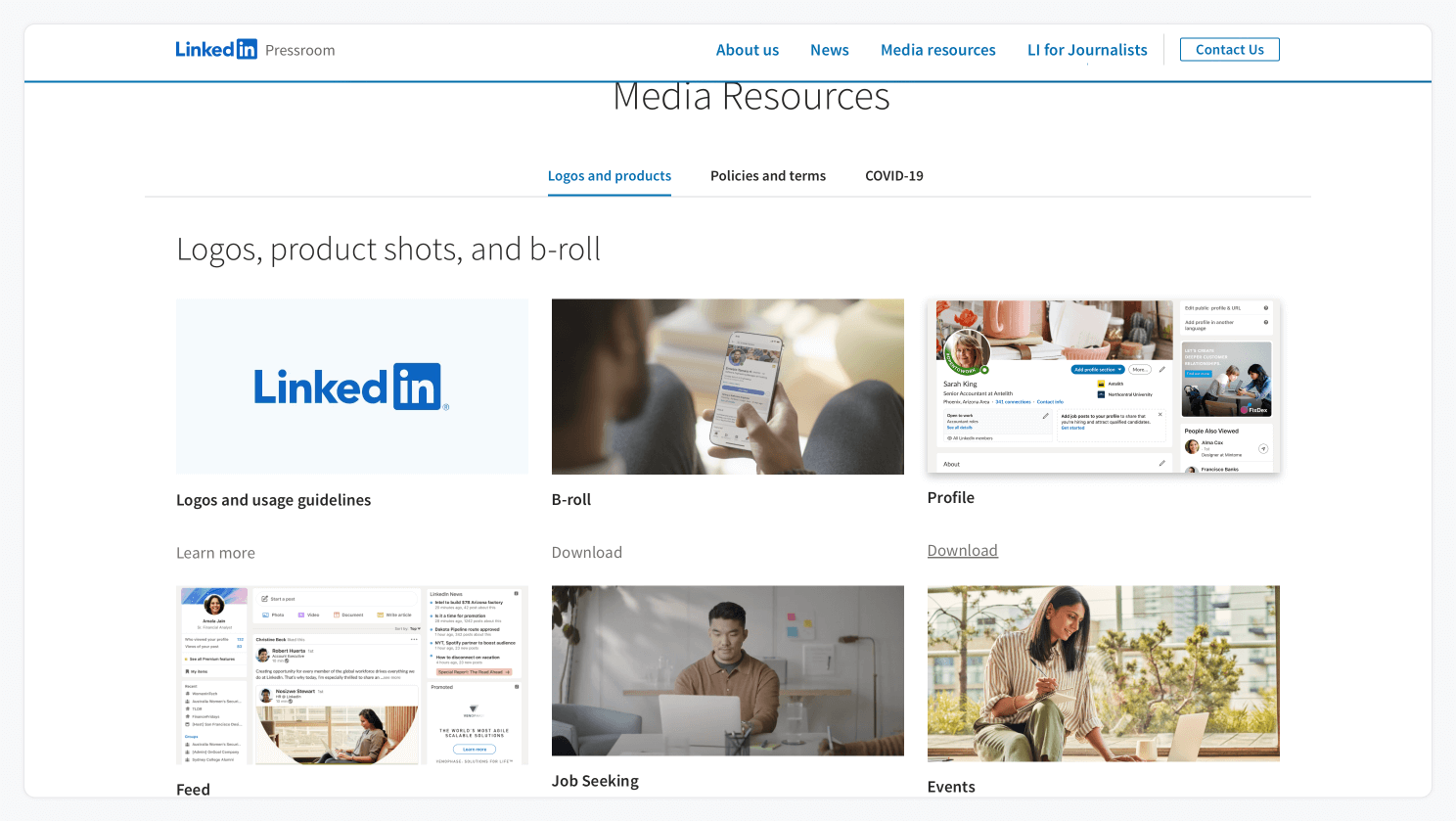
3. Influencer Media Kit
As we mentioned earlier, media kits can come in different formats and vary depending on your business niche. If you’re an influencer specializing in user-generated content (UGC) marketing, having a media kit can be incredibly beneficial.
Here’s an example of a media kit from Charlotte Arsenault, a content creator who specializes in producing video content for brands:

4. Denison University
This social media kit example comes from Denison University, based in Granville, Ohio. They have created an excellent social media press kit with step-by-step instructions on how to create promotional content for various social media platforms.
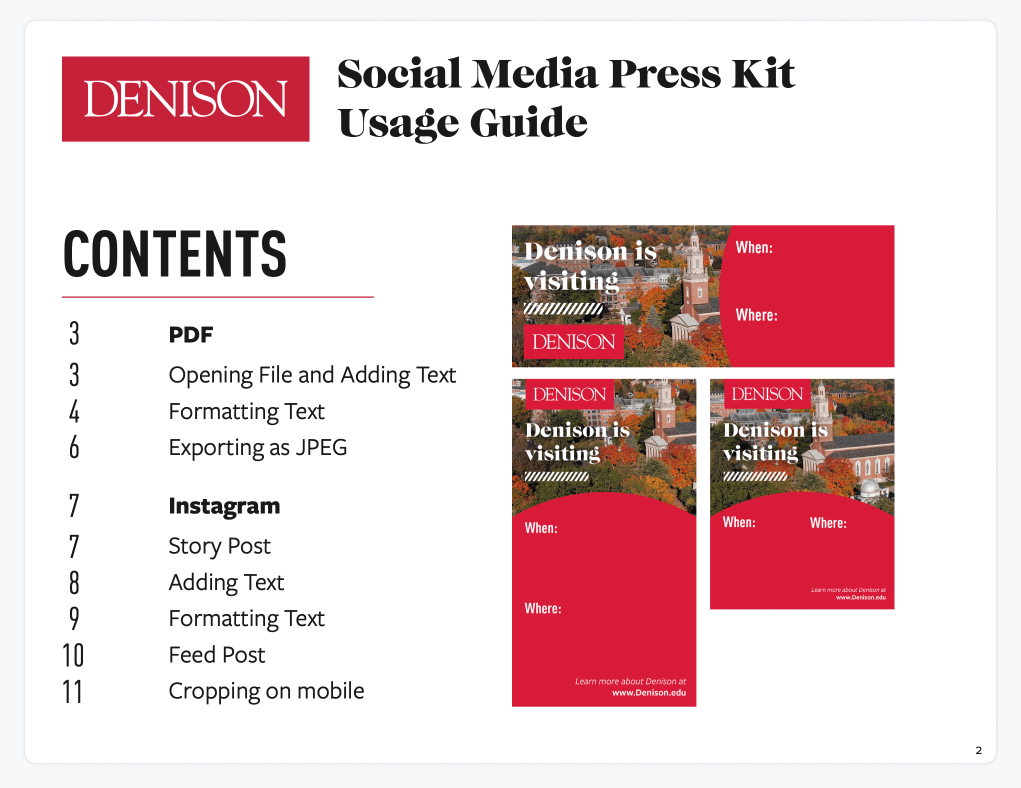
Their kit gives an idea of how to promote the university’s planned visits to different schools.
5. Campaign-specific Social Media Kit
A social media kit doesn’t have to be about your brand in general. It can be created for specific social media campaigns you’re running.
Take a look at this example from the European Commission. They created a social media kit specifically for the launch of their #EUDiversityMonth campaign. This toolkit provides ideas on how to promote EU Diversity Month, including various social media elements, templates, and messages.

Key Components of a Social Media Kit
What to include in your social media kit will depend on your business. But to give you an idea, here are some elements you could add to your kit:
- A Biography or About Us Information: Introduction to your company, mission, and vision.
- Logos and Icons: Include various formats and sizes of your brand’s logo and any specific icons that represent your brand.
- Color Palette: Provide the exact color codes for your brand’s primary and secondary colors.
- Typography: Specify the fonts and styles used in your brand’s communications.
- Image and Video Guidelines: Outline the style and type of images and videos that align with your brand’s aesthetics.
- Templates: Provide templates for posts, stories, and other social media formats.
- Content Guidelines: Include tone of voice, key messaging points, and any specific hashtags or keywords that should be used.
- Social Media Statistics: Social media kits aimed at partnerships and collaborations should have basic engagement statistics included to showcase your brand’s influence.
How to Build an Effective Social Media Kit
Creating an effective social media kit takes time and effort. However, thanks to many tools and templates available (more on this later), you can do it more efficiently. Follow these five practical steps to build a comprehensive kit for your brand:
Step 1: Gather Your Brand Assets
Collect all your brand’s visual elements, including logos, color codes, fonts, and imagery. Ensure you have various formats (JPEG, PNG, SVG) and sizes for different platforms.
Step 2: Design Templates
Use design tools like Canva or Adobe Express to create social media templates for posts, stories, and ads. Ensure these templates align with your brand’s visual style and are easy to customize. Having ready-to-use templates speeds up content creation and maintains a cohesive look.
Step 3: Set Content Guidelines
Define your brand’s tone of voice, messaging, and key phrases. Include do’s and don’ts for writing captions and engaging with your audience. Clear content guidelines help anyone creating content for your brand to stay on message and maintain consistency.
Step 4: Compile Media and Other Important Information
Include high-quality images, videos, and any other media that represent your brand. Add a section with important information about your brand, such as your mission statement, core values, and key statistics. This is particularly useful for journalists and partners who need quick access to brand information. This way, they don’t have to reach out to you every time they need something basic about your company.
Step 5: Distribute and Update Regularly
Lastly, make your social media kit easily accessible to your team, freelancers, and partners. Store it in a shared drive, cloud service, or your website. Regularly update the kit to reflect any changes in your branding or marketing strategy. Consistent updates ensure that everyone is working with the most current materials.
Tools and Resources for Building Social Media Kits
The good news is that you don’t have to create your social media kit from scratch. Thanks to thousands of templates and several tools on the market, you can build a professional media kit faster.
If you’re seeking inspiration, Pinterest is a great place to start. Simply type “social media kits” into the search bar, and you’ll find hundreds of options to browse through. Additionally, you can visit the websites of brands you admire to find their social media kits.
When it comes to tools, Canva is an excellent choice. You can either design your own social media kit from scratch or use a customizable template. Additionally, you can explore Adobe Express and Glorify, both of which offer extensive libraries of templates and AI capabilities to streamline the process.
FAQs About Social Media Kits
A social media kit ensures consistency in your brand’s visual and tonal elements across all platforms. It streamlines content creation, saves time, and enhances professionalism, which can lead to increased brand recognition and trust. Consistent branding also helps build a stronger connection with your audience and improve overall engagement rates.
You should update your social media kit whenever your brand significantly changes, such as a rebranding, new logo, updated color scheme, or changes in marketing strategy. Regular reviews, at least once a year, are also recommended to ensure all elements remain current and relevant.
Yes, a well-designed social media kit can be adapted across all social media platforms. It should include templates and guidelines that cater to the specific requirements and dimensions of each platform, ensuring your brand maintains a cohesive look and feel everywhere it appears online.
To Sum Up
Creating a social media kit might sound like a lot of work, but it’s totally worth it to keep your brand looking sharp and consistent online. By now, you should know what goes into a social media kit, why it’s a game-changer for your brand, and how to put one together.
As a next step, check out Gain, our tool for managing social media. Gain helps you plan, schedule, and collaborate effortlessly. It automates the process of gathering feedback and approvals from stakeholders, organizes your content calendar, and keeps everything on track, making your life easier and your brand’s presence stronger.
Whether you’re using Gain internally to create, approve, and publish your own content or you’re a social media agency managing multiple accounts for clients, Gain can help you work faster and smarter.
Try Gain at no cost (no credit card required).

